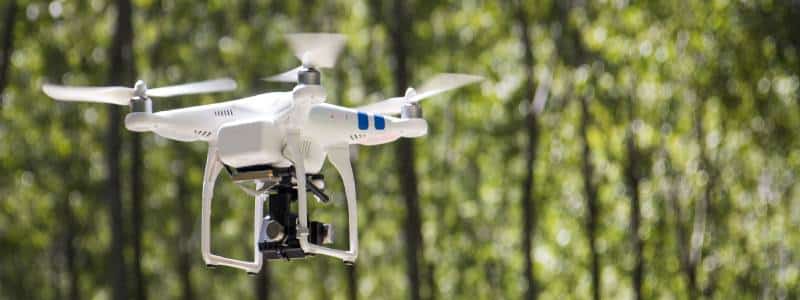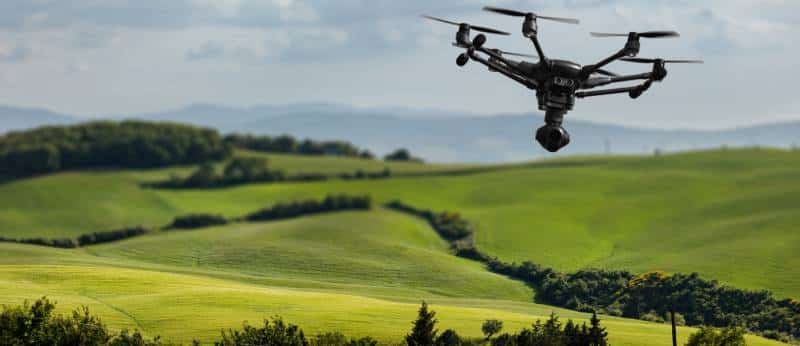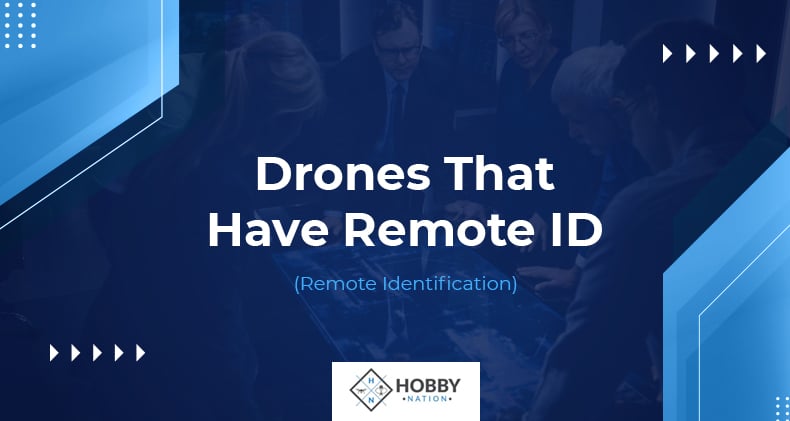Unmanned Aerial Vehicles are seriously changing aviation and the operation of aircraft globally. With the increase in the usage of drones, there is a need for new rules and regulations to ensure drones are operated safely. The Federal Aviation Administration is planning on enforcing Remote ID for drones to ensure safety and security.
Only DJI drones have Remote IDs. Some DJI drones with Remote IDs are:
- DJI Phantom 4
- DJI Phantom 4 Pro
- DJI Phantom 4 RTK
- DJI Phantom 4 Pro V2
- Mavic Pro
- Mavic Mini
- Mavic 2 Pro
- DJI Spark
- Inspire 1
- Matrice 200
- Inspire 2
- Matrice 210
- Inspire 2 Pro
- Matrice 300
- Mavic 2 Enterprise
In 2017, DJI said they wanted to create a digital license plate, a method similar to the Remote ID, so when the FAA announced the implementation of a Remote ID for all drones, DJI was the first to implement it in all their drones.
What Is Remote ID For Drones?
Remote IDs are electronic license plates for drones, allowing the authorities to identify and monitor the drones flying and the pilot operating them. Remote IDs are very similar to a car license plate. With Remote IDs for drones, flying a drone will be safer, there will be increased acceptance of drones, and all previous restrictions may be removed since drones can now be monitored and identified.
With the new Remote ID for drone rules, manufacturers of drones have eighteen months to ensure all newly produced drones are equipped, and pilots have thirty months to retrofit any previously owned drone they want to continue flying. As of October 21st 2023, drones owned today will not be legal unless retrofitted.
Some of the new rules for Remote ID for drones are:
- All drones registered with the Federal Aviation Administration must have a Remote ID.
- The local broadcast for drones will be the Remote ID instead of Bluetooth or Wi-Fi. Internet/network transmission has been removed.
- All drones must pass a self-test; drones with Remote IDs that are not functional will not be able to take off.
- There are three methods of complying: a Remote ID broadcast module, standard Remote ID in the drone, or operations in an FAA-approved flight area.
- State and local law enforcement can now punish every pilot who violates drone laws.
In the following sections, we will look at the three options for complying with the Remote ID rules.

Remote ID Broadcast Module
A Remote ID Broadcast Module is an alternative to the Standard Remote ID. This method is for drones in use before the implementation of the Remote ID. It is a good solution for drones that do not have GPS. Some things to know about the Remote ID Broadcast Module:
- You must add the Remote ID Broadcast Module's serial number when registering your drone with the Federal Aviation Administration.
- The Broadcast Module transmits the drone's serial number, longitude, latitude, velocity, altitude, take-off location, and a time mark.
- The pilot's latitude, longitude, ground station, and altitude are also transmitted.
- All drones equipped with Broadcast Modules cannot be used for any operation beyond the visual line of sight.
Standard Remote ID Broadcast

All drones produced soon will use the Standard Remote ID Broadcast. Some of the things you should know about it are:
- The session ID OR serial number, longitude, latitude, velocity, and altitude of your drone will be transmitted.
- There is an emergency status and time mark included in the Standard Remote ID Broadcast.
- The pilot's latitude, longitude, ground station, and altitude are also transmitted.
Only the FAA can access the drone's serial number, but any personal wireless device in range can access other information. However, authorized national security personnel and law enforcement can be granted access to the serial number database upon request.
FAA-Recognized Identification Areas
Eighteen months after the Remote ID rule has been implemented, organizations can apply for FAA-Recognized Identification Areas (FRIA) compliance. These are the rules for drones without a Remote ID:
- Drones without Remote ID can be operated without broadcasting.
- Drones without Remote ID must fly within visual line of sight and within the FRIA.
- Anyone can fly in FRIAs, but only community-based organizations and educational institutions can request FRIAs.
Organizations and institutions applying for FRIAs must indicate their physical address of the FRIA, the latitude and longitude coordinates of the vertices defining the boundary of the area. The FAA will consider the proximity of other FRIAs when accessing an FRIA request application.
After the FAA has approved a FRIA, institutions, and organizations have ten days to submit any amended information or administrative changes. If there is a change in geographical boundaries, the FAA will evaluate the revisions and changes in accordance with the criteria of a new application.
Do Any Drones Have Remote ID?
Although the Federal Aviation Administration has not released the Remote ID protocols or an approved broadcast module, no drone is yet to comply because the compliance has not been released. However, if you read the Remote ID rules, you will see that most drones and some first-person view drones comply with the proposed Remote ID broadcast module.
Below we listed all the drones already in compliance with broadcast Remote ID.
- Mavic Air
- DJI Phantom 4
- DJI Phantom 4 Pro
- DJI Phantom 4 Pro V2
- Mavic 2 Enterprise Dual Advanced
- DJI Phantom 4 Multispectral
- DJI Phantom 4 RTK
- Mavic Mini
- Mavic Air 2
- Mini 2
- Mavic Pro
- Mavic 2 Zoom
- Mavic 2 Enterprise Dual
- DJI Spark
- Inspire 1
- Matrice 200
- Mavic 2 Enterprise
- Inspire 2
- Matrice 210
- Inspire 2
- Matrice 300
- Inspire 2 Pro
A statement released by DJI says the company has been in support of the Remote ID initiative because it will improve drone safety, accountability, and security. DJI has been using a system known as Aerospace since 2017 to keep a record of all drones produced. So, if law enforcement officers need a way to track a DJI drone, it could be done easily.
Does DJI FPV Drones Have Remote ID?

Most analog first-person view drones do not comply with Remote ID rules. Digital FPV drones are more commonly used than analog FPV drones. DJI recently launched an air unit to power new DJI FPV drones. The air unit allows pilots to fly FPV drones using digital transmission. FPV drones using the DJI air unit are not Remote ID compatible.
However, there is a chance that DJI FPV drones can be retrofitted with a Remote ID in the future. These FPV drones have a Type C USB port that can be used to plug a Remote ID module.
Does The DJI Mini Have Remote ID?
All drones that weigh 250 grams or more need to comply with the Remote ID requirements, whether the drone is used for recreation or commercial purposes. One of the most popular DJI drones, the DJI Mavic Mini has a weight of 249 grams. This is not a coincidence that the drone is 1 gram short of the FAA's threshold for registering recreational drones.
DJI launched a modified version of the Mavic Mini specifically for Japan, and it weighs 199 grams, the threshold needed to comply with Japan's law on micro-drones. All DJI Mini drones have Remote ID settings in the mobile applications, so yes, they have Remote ID when you load the application.
Final Thoughts
All drones weighing 0.55 pounds or more would have to broadcast a signal that transmits their position, altitude, and serial number. The good thing is that the final version of the Remote ID rule does not require you to connect to a mobile network, store flight data in a database, or pay a monthly subscription fee as proposed in the original rule. The new Remote ID rule would take effect in 2023.
Shawn Manaher loves to play with new toys and dive into new hobbies. As a serial entrepreneur, work definitely comes first but there is always room for hobbies.

